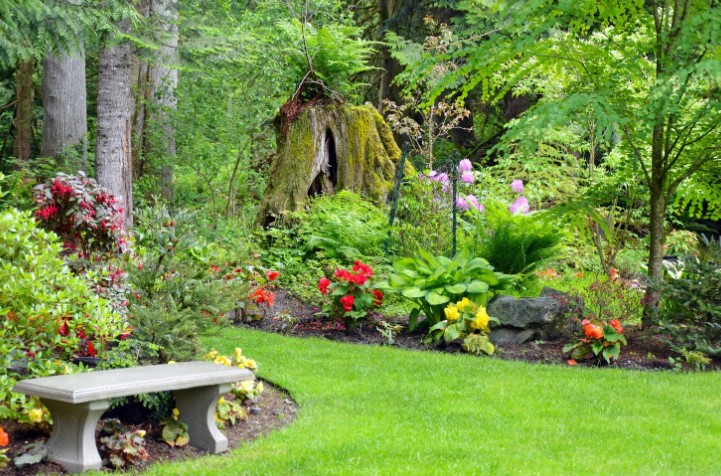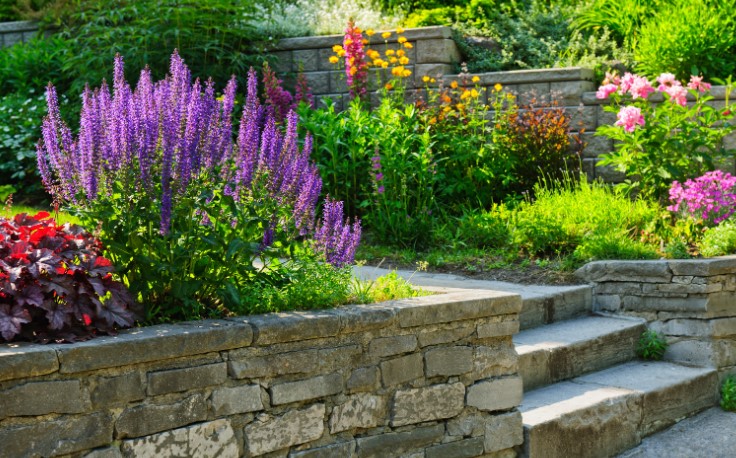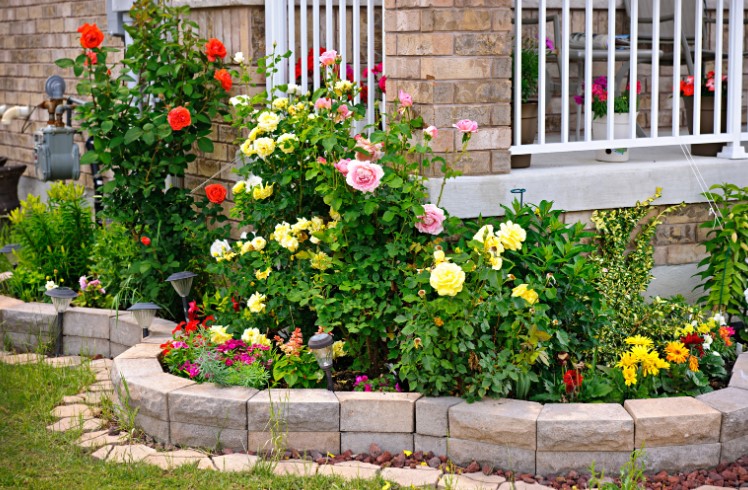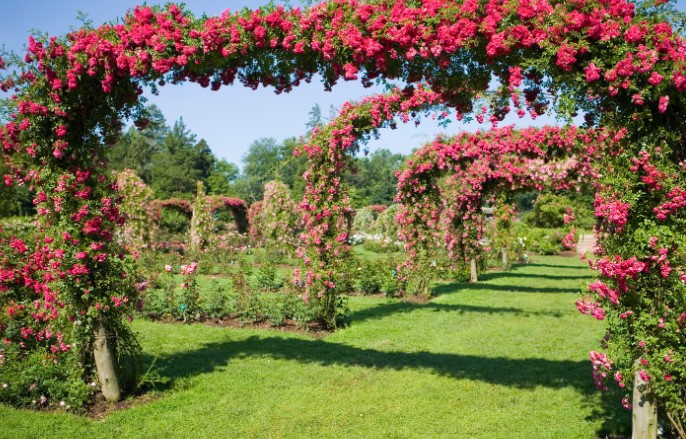Railway sleepers are an excellent choice for creating a durable and stylish garden border. Their rustic charm, affordability, and ease of installation make them popular among DIY gardeners and landscapers.
Whether you want to define flower beds, create a pathway edge, or frame your lawn, sleepers offer a practical and visually appealing solution.
In this guide, I will walk you through the step-by-step process on how to lay railway sleepers as a border, including the tools and materials needed, installation techniques, and maintenance tips.
Why Use Railway Sleepers for Garden Edging?
Railway sleepers have become a go-to option for garden edging due to their versatility and durability. Here are some key benefits:
- Sturdy and Long-Lasting: Timber sleepers, especially hardwood ones, can last for decades with proper treatment.
- Aesthetic Appeal: Their natural wood finish complements both modern and traditional garden designs.
- Cost-Effective: Compared to stone or brick edging, sleepers are relatively affordable and easy to install.
- DIY Friendly: They require minimal groundwork and can be laid by homeowners with basic tools.

New vs. Reclaimed Railway Sleepers
| Feature | New Railway Sleepers | Reclaimed Railway Sleepers |
| Condition | Fresh, untreated | Aged, often treated with creosote |
| Appearance | Smooth, uniform | Weathered, rustic look |
| Durability | Longer lifespan if treated properly | May have some wear but still durable |
| Cost | More expensive | Generally cheaper |
| Suitability | Ideal for formal gardens | Great for rustic, natural designs |
New sleepers offer a cleaner look and longer lifespan, while reclaimed sleepers provide character and sustainability. The choice depends on your garden’s style and budget.
What Materials and Tools Do You Need?
Before starting your project, gather the necessary materials and tools.
Materials:
- Railway sleepers (hardwood or softwood)
- Gravel or sand for bedding
- Long timber screws, rebar, or stakes for securing
- Wood preservative (if using untreated sleepers)
Tools:
- Saw (for cutting sleepers to size)
- Drill and screws
- Spirit level
- Shovel and rake
- Rubber mallet (to position sleepers)
Having the right tools ensures a smoother installation process and a professional-looking result.
Step-by-Step Guide: How to Lay Railway Sleepers as a Border?
Step 1: Plan and Mark the Border Area
- Determine the layout of your sleeper border and mark the area using string or chalk.
- Decide whether you want the sleepers laid flat, stacked, or upright.
- Measure the sleepers to ensure they fit the space.
Step 2: Prepare the Ground
- Dig a shallow trench where the sleepers will sit, approximately 5-10 cm deep.
- Remove any weeds or debris from the area.
- Ensure the base is level using a spirit level to prevent uneven edging.
- Add a layer of gravel or sand for stability and drainage.
Step 3: Position the Sleepers
- Lay the sleepers in the trench according to your planned design.
- If placing them flat, ensure they sit evenly along the border.
- For stacked sleepers, arrange the first layer securely before adding additional layers.

Step 4: Secure the Sleepers in Place
- Option 1: Wooden Stakes – Drive stakes behind the sleepers and screw them in place.
- Option 2: Rebar or Metal Rods – Drill holes and hammer rods through the sleepers into the ground for added stability.
- Option 3: Timber Screws – If stacking, use long screws to join the layers together.
Step 5: Finishing Touches
- Apply a wood preservative to prevent rotting and extend the lifespan of the sleepers.
- Fill any gaps with gravel, soil, or plants to integrate the edging with the garden.
- Check the alignment one last time and make necessary adjustments.
Maintenance Tips for Railway Sleeper Borders
To ensure your railway sleeper border remains in good condition, follow these maintenance practices:
- Prevent Rotting: Use a wood preservative, especially on the ends that touch the soil.
- Check Stability: Inspect sleepers periodically and secure any that become loose.
- Clean and Treat: Wash off dirt and apply a sealant to protect the wood from weather damage.
- Improve Drainage: Ensure water does not pool around the sleepers, as excess moisture can speed up decay.
Creative Garden Edging Ideas with Railway Sleepers
Railway sleepers can be used in various ways beyond simple garden borders. Here are some inspiring ideas:
- Raised Flower Beds: Stack sleepers to create elevated garden beds for flowers or vegetables.
- Pathway Edging: Use sleepers to line a gravel or stone pathway, giving it a structured look.
- Layered Steps: Create steps on sloped gardens using sleepers for a natural transition between levels.
- Combination Borders: Mix railway sleepers with gravel, bricks, or metal edging for a unique design.

Conclusion
Laying railway sleepers as a garden border is a simple yet effective way to enhance your outdoor space. By following the right installation steps and using quality materials, you can create a long-lasting, attractive edging that defines your garden beautifully.
Whether you prefer a rustic reclaimed look or a polished new sleeper design, this DIY project adds character and structure to your garden and learn about few best garden edging sleepers and how to lay them.
If you’re planning to install railway sleeper borders, take your time to prepare the ground properly, secure the sleepers well, and maintain them regularly for the best results.
Frequently Asked Questions (FAQs)
1. Can I lay railway sleepers directly on soil?
Yes, but using a gravel or sand base improves stability and drainage, preventing rot over time.
2. Do I need to treat railway sleepers before installation?
If using new untreated sleepers, apply a wood preservative to protect against moisture and pests. Reclaimed sleepers may already have treatment but should be checked for any hazardous chemicals.
3. How long do railway sleepers last in the garden?
With proper treatment and maintenance, railway sleepers can last 15-30 years, depending on wood type and environmental conditions.
4. Should I use hardwood or softwood sleepers?
Hardwood sleepers (oak or tropical hardwood) are more durable but expensive. Softwood sleepers (pine or spruce) are budget-friendly but require regular treatment to prevent decay.
5. Can I use reclaimed railway sleepers for borders?
Yes, but ensure they are free from harmful chemicals like creosote, which can be hazardous for plants and pets.


0 Comments